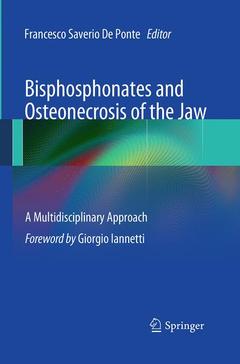During the early 19th century, it was discovered that adding yellow (now called white) phosphorous to matchstick heads made it easier to ignite matches. The phosphorous vapors were breathed in by workers and combined with other chemicals in the body to produce a potent nitrogen-containing bisphosphonate. Today's oral nitrogen-containing bisphosphonates and intravenous nitrogen-containing bisphosphonates circulate around the body the same way as the phosphorous vapors, and are absorbed into bone and ingested by osteoclasts. When this unique binding process of bisphosphonates to bone occurs, osteoclasts are poisoned, and this reduces or eliminates bone turnover. Alveolar bone in the mandible and maxilla turns over more rapidly than in long bones, so the jaws are a better target for bisphosphonate toxicity. It wasn't until 2003 that today's intravenous and oral nitrogen-containing bisphosphonate medications were implicated as major risk factors in the development of exposed necrotic bone of the jaws. Most of the researchers who reported cases of bisphosphonate-induced osteonecrosis of the jaw found that these patients were treated with zoledronate, pamidronate, or a combination of these drugs, which are commonly used for treating breast cancer or myeloma. In about 5% of cases, subjects with BIONJ were being treated for osteoporosis. Precipitating events that contribute to BIONJ are tooth extractions (about 50% of cases), mandibular exostoses, periodontal disease, and local trauma from ill-fitting dentures. It is not known if the placement of dental implants is a precipitating factor. The book aims to meet the need of medical practitioners working in all fields that use bisphosphonates, and to present the conservative and surgical treatment methods currently in use. There will also be detailed information on the literature relating to dental implants in patients treated with bisphosphonates.





